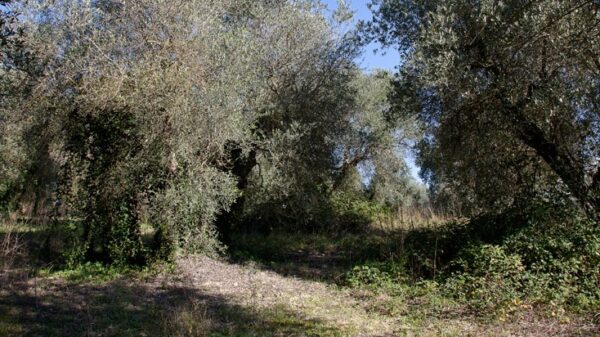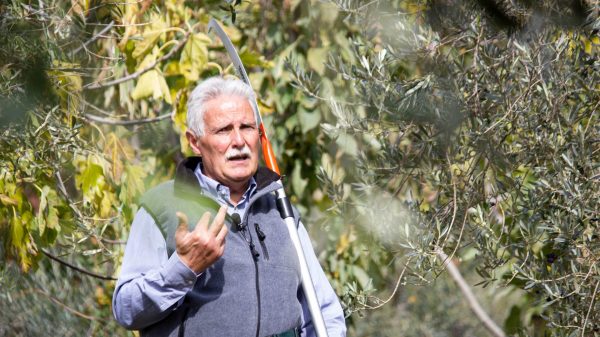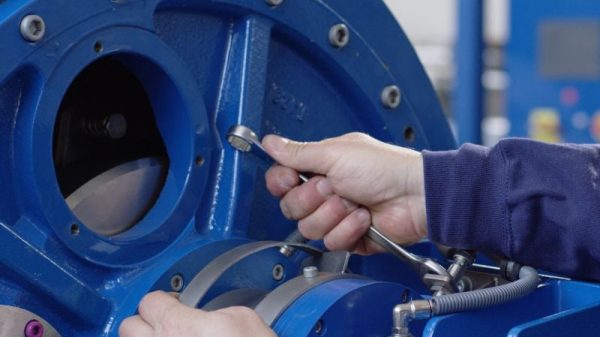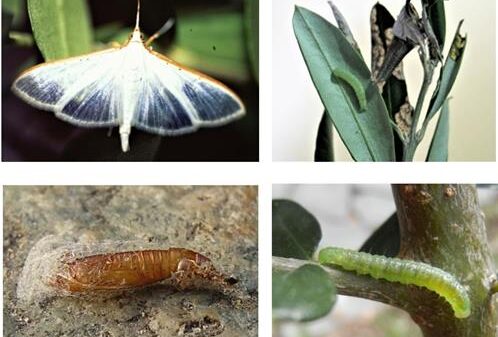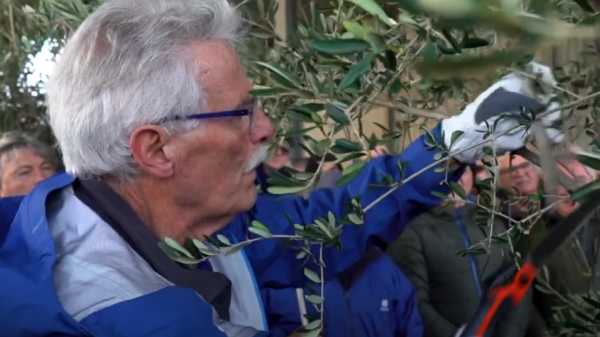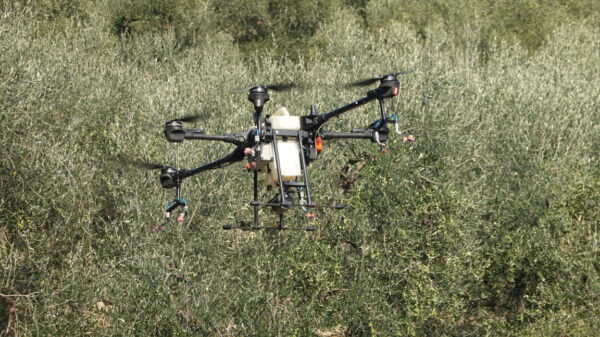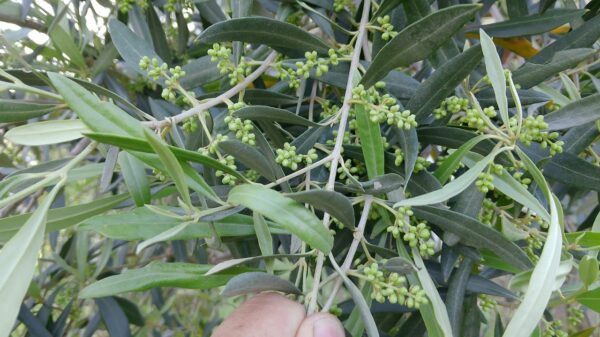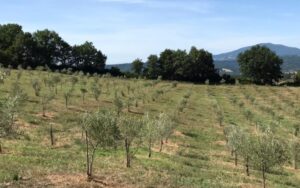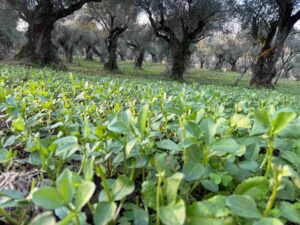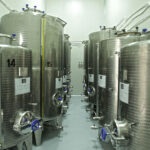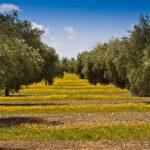Il olive flower completes its development over a relatively long period of time, during which various phenological phases follow one another in which delicate and intimate biological and morphological processes take place. These, in their bio-chemical complexity, are conditioned by multiple environmental factors, including light intensity, lack or excess of rest, thermal variations, windiness, pH and salinity of the soil, pathogens, etc., towards which each plant can have a different margin of tolerance and some of which we can influence with appropriate choices /agronomic-cultural practices.
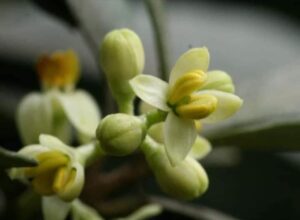
The processes that lead the lateral buds of an olive branch to evolve first into little fingers, then into flowers and subsequently into fruits, are commonly divided into the following phases: flower induction, anatomical differentiation, formation of the little finger and flowers, pollination of the flower , fertilization of the ovocell inside the ovary, fruit setting.
Given the impact of the phenomena of bud induction and differentiation on the fruiting process, understanding how and when buds are induced to develop in these directions, in order to regulate those factors that favor them. The "beginnings" of flower induction occur during the formation and growth of the new shoot: in this phase, the production potential is determined in relation to the quantity and length of the shoots formed. Olive productionIn fact, derives from the flowers borne by the inflorescences that are formed in the axils of the leaves of the previous year's shoots, although exceptionally it can also occur on two-year-old branches. It is essential, therefore, that for good production levels the plants have an adequate quantity of long and well-formed shoots.
Due to the importance of understanding the dynamics of the processes of induction and differentiation of buds, over the years there have been numerous contributions from researchers who, to carry out their activities, have made use of means of investigation such as scalar defoliation, the elimination of fruits, the shading of the foliage, the analysis of the organs, the administration of hormonal and nutritional substances, implementing them in the various phases of the fruiting cycle.

The results of the investigations generally converge in support of the theory according to which, around the month of July before the summer break, a series of environmental and nutritional factors would exert an initial influence on the bud towards the reproductive form (pre-floral induction). In the autumn months further confirmation would be necessary, to which they would contribute environmental and endogenous factors (nutrition and hormones) and to whom, within an inclusive period between November and February and even beyond (also the result of the accumulation achieved during cold hours) according to the areas and according to the cultivars, would follow the anatomical differentiation of the buds. This is given precisely by those processes through which the initially vegetative bud transforms at the end of the process into a flower bud containing the floral primordia, from which the little finger will develop at the moment of hatching.
This theory, however, partly succumbs to the fact that, in the northern belt of the Mediterranean, even the lateral buds formed in October and early November often evolve into pinkies. Furthermore, in the different areas of the foliage there are lateral buds which, after their formation, can evolve in a differentiated way. A part of the buds remains inactive until the winter months, after which it begins to grow again, advancing the stage of development to form the little finger, while the other part begins to develop from the beginning, forming three nodes, then stops and eventually resumes growth only in the following spring.
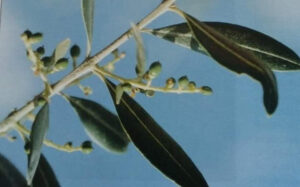
The researchers note that i branches with buds that remained inactive until vegetative growth have a greater quantity of little fingers than those that had already started to develop. It can therefore be hypothesized that the plant probably tries to organize the evolution of the buds in the different areas based on the possibilities and its balance.
As is known, the olive tree is a species that tends to produce every other year, so much so that years with abundant fruiting and little vegetative activity, called a charging year, alternate with years with poor fruiting and an excess of vegetation, called a discharge year. The causes of this trend lie mainly in the considerable demand on resources of the fruit load, in the genetic sphere (cultivar) and in the physiological sphere, the latter depending not only on the age of the plants, but also on the environmental (climate) and cultural (nutrition) conditions. It is believed that in nature they are the fluctuations in energy reserves in the plant prevent it from simultaneously providing for vegetative growth and bud differentiation; in the field of cultivation, it is often climate trends and cultivation techniques that accentuate or attenuate this unpleasant production alternation. If climatic trends have their own course, cultivation techniques can be modeled in the best possible way to appropriately contain these variations in production between years.
They are functional for the purpose:
1) winter production pruning, in terms of time, intensity and pruning shift, which if correct help find the right balance between vegetative vigor and productive activity;
2) summer pruning, which stimulates vegetative growth and therefore the number of production sites;
3) fertilization;
4) irrigation;
5) phytosanitary protection;
6) soil management;
7) harvesting, which if carried out late involves a greater and harmful waste of resources.
These practices, in their wise application, single and/or integrated, can allow the maintenance of adequate and constant levels of nutritional substances, which make it possible to satisfy both production and vegetative needs.
In closing, it is worth remembering that on very vigorous plants, which tend to favor vegetative activity, carrying out early pruning and consistent nitrogen fertilization reduces the already reduced floral induction, and can lead to anomalies in flower formation (ovary abortion). , for their effects on vigor.
Browse for free l'Olivo News click , here

